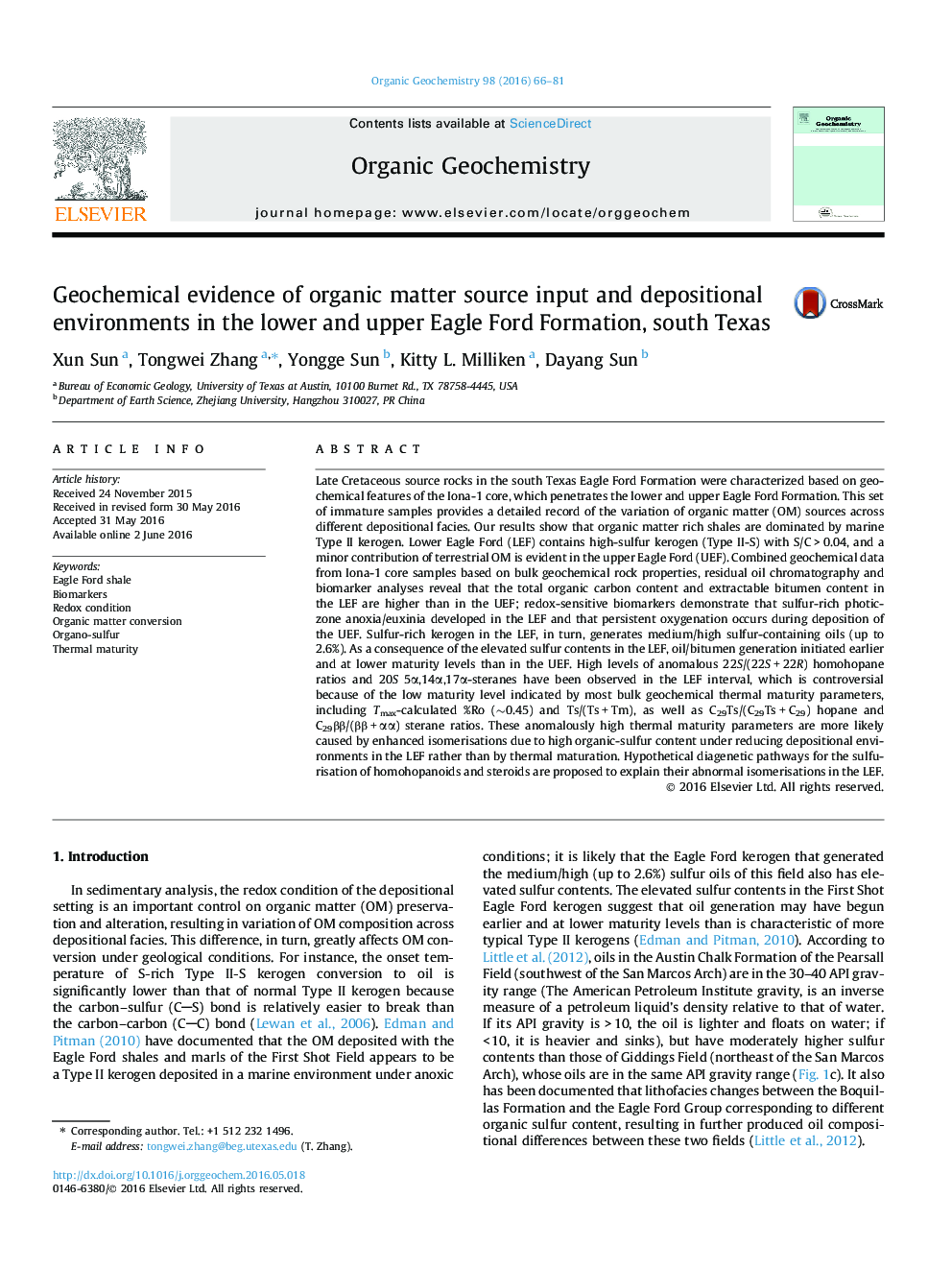| کد مقاله | کد نشریه | سال انتشار | مقاله انگلیسی | نسخه تمام متن |
|---|---|---|---|---|
| 5162204 | 1502265 | 2016 | 16 صفحه PDF | دانلود رایگان |
عنوان انگلیسی مقاله ISI
Geochemical evidence of organic matter source input and depositional environments in the lower and upper Eagle Ford Formation, south Texas
ترجمه فارسی عنوان
شواهد ژئوشیمیایی ورودی منبع آلی و محیط رسوبگذاری در سازند ارگ بال فروردین پایین و بالا، جنوب تگزاس
دانلود مقاله + سفارش ترجمه
دانلود مقاله ISI انگلیسی
رایگان برای ایرانیان
کلمات کلیدی
شیل اژل فورد، بیومارکرها، شرایط ردوکس، تبدیل مواد آلی، گوگرد ارگانیک، بلوغ حرارتی،
موضوعات مرتبط
مهندسی و علوم پایه
شیمی
شیمی آلی
چکیده انگلیسی
Late Cretaceous source rocks in the south Texas Eagle Ford Formation were characterized based on geochemical features of the Iona-1 core, which penetrates the lower and upper Eagle Ford Formation. This set of immature samples provides a detailed record of the variation of organic matter (OM) sources across different depositional facies. Our results show that organic matter rich shales are dominated by marine Type II kerogen. Lower Eagle Ford (LEF) contains high-sulfur kerogen (Type II-S) with S/C > 0.04, and a minor contribution of terrestrial OM is evident in the upper Eagle Ford (UEF). Combined geochemical data from Iona-1 core samples based on bulk geochemical rock properties, residual oil chromatography and biomarker analyses reveal that the total organic carbon content and extractable bitumen content in the LEF are higher than in the UEF; redox-sensitive biomarkers demonstrate that sulfur-rich photic-zone anoxia/euxinia developed in the LEF and that persistent oxygenation occurs during deposition of the UEF. Sulfur-rich kerogen in the LEF, in turn, generates medium/high sulfur-containing oils (up to 2.6%). As a consequence of the elevated sulfur contents in the LEF, oil/bitumen generation initiated earlier and at lower maturity levels than in the UEF. High levels of anomalous 22S/(22S + 22R) homohopane ratios and 20S 5α,14α,17α-steranes have been observed in the LEF interval, which is controversial because of the low maturity level indicated by most bulk geochemical thermal maturity parameters, including Tmax-calculated %Ro (â¼0.45) and Ts/(Ts + Tm), as well as C29Ts/(C29Ts + C29) hopane and C29ββ/(ββ + αα) sterane ratios. These anomalously high thermal maturity parameters are more likely caused by enhanced isomerisations due to high organic-sulfur content under reducing depositional environments in the LEF rather than by thermal maturation. Hypothetical diagenetic pathways for the sulfurisation of homohopanoids and steroids are proposed to explain their abnormal isomerisations in the LEF.
ناشر
Database: Elsevier - ScienceDirect (ساینس دایرکت)
Journal: Organic Geochemistry - Volume 98, August 2016, Pages 66-81
Journal: Organic Geochemistry - Volume 98, August 2016, Pages 66-81
نویسندگان
Xun Sun, Tongwei Zhang, Yongge Sun, Kitty L. Milliken, Dayang Sun,
